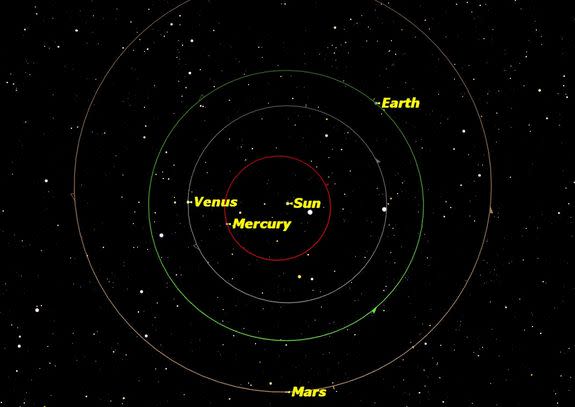 Science and Weather
Science and WeatherEarth swings around closest point to the Sun today

Last night, at roughly midnight Eastern Standard Time, the Earth reached 'perihelion' — the point in its orbit where it is closest to the Sun.
As the planets in our solar system orbit around the Sun, their paths trace ellipses, rather than circles, meaning that they all have a point when they are closest to the Sun in their orbit (perihelion) and a point when they are farthest (aphelion).
For the Earth, the difference between our distances to the Sun at perihelion and aphelion is just shy of five million kilometres, which is only about three per cent of our average distance from the Sun (defined as an Astronomical Unit or AU). If you were to draw a scaled representation of our orbit across the width of standard piece of letter-sized paper, the difference would only be about 6 millimetres — roughly the thickness of the pencil you used to draw it.
[ Related: The Official Geekquinox ‘Ten Cool Things to Watch the Sky for in 2013′ ]
Obviously, it isn't this difference in distance to the Sun that causes Earth's seasons, otherwise why would it be winter when we're closest to the Sun, but perihelion and aphelion do have some effect on our seasons.
The Earth's 23-degree tilt means that, for half of the year, the northern hemisphere is tilted towards the Sun while the southern hemisphere is tilted away, and for the other half, the southern hemisphere is tilted towards the Sun and the northern hemisphere is tilted away. It's this tilt, and the change in the amount of sunlight each hemisphere is exposed to at any point in the year, that causes our shift from Spring to Summer to Autumn to Winter.
However, since the Earth is closest to the Sun in its orbit when the northern hemisphere is tilted away from the Sun, this means that our winters in Canada are likely just a little bit more mild than the winters the southern hemisphere experiences. Conversely, since we have our summer when the Earth is farthest from the Sun, at aphelion, our summers are likely a bit cooler than summer in the southern hemisphere.
[ More Geekquinox: Chris Hadfield shows off Canada with tweets from space ]
Also, you might like to know that, because of the elliptical shape of our orbit, the planet is moving faster when it is closer to the Sun and slower when it is farther from the Sun. This means that our winters are actually five days shorter than our summers, although I have to admit that it never feels that way — winter seems to go on forever and summer never lasts long enough!


